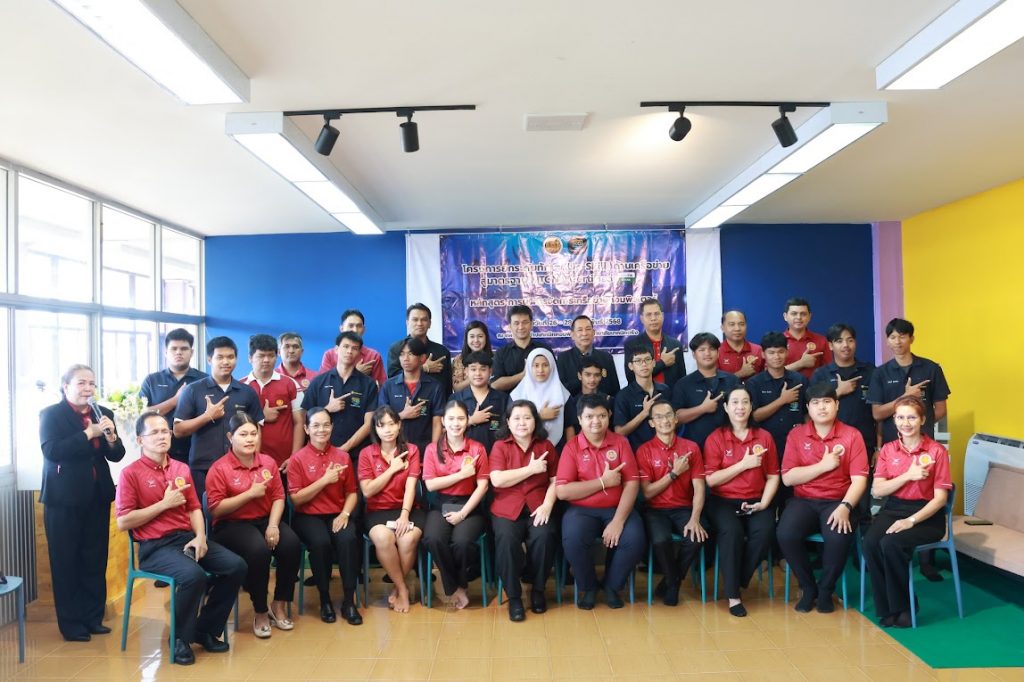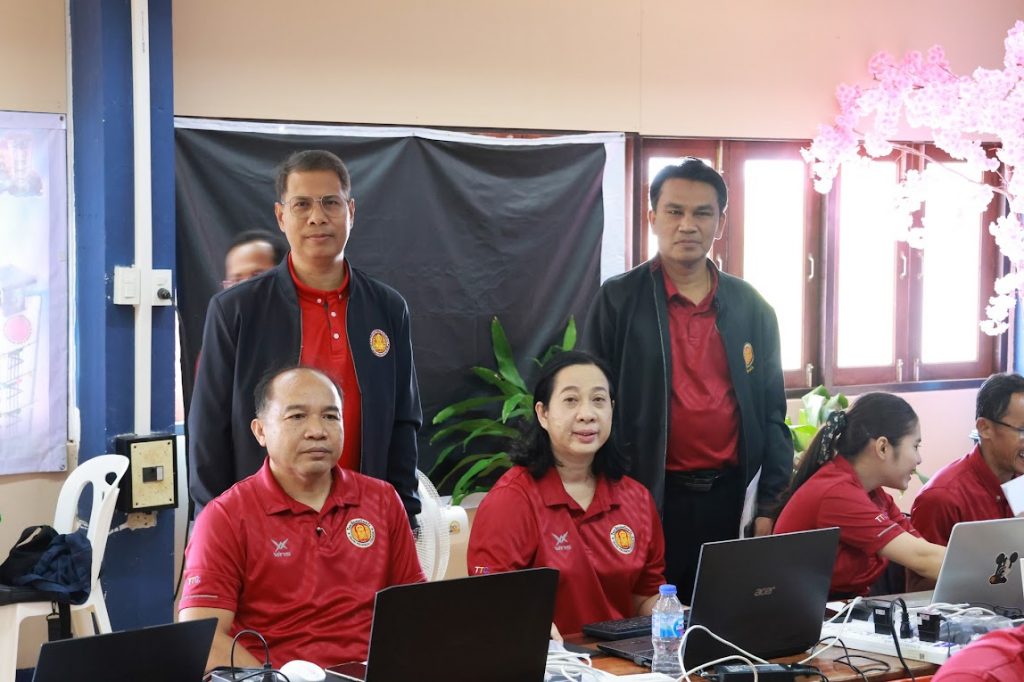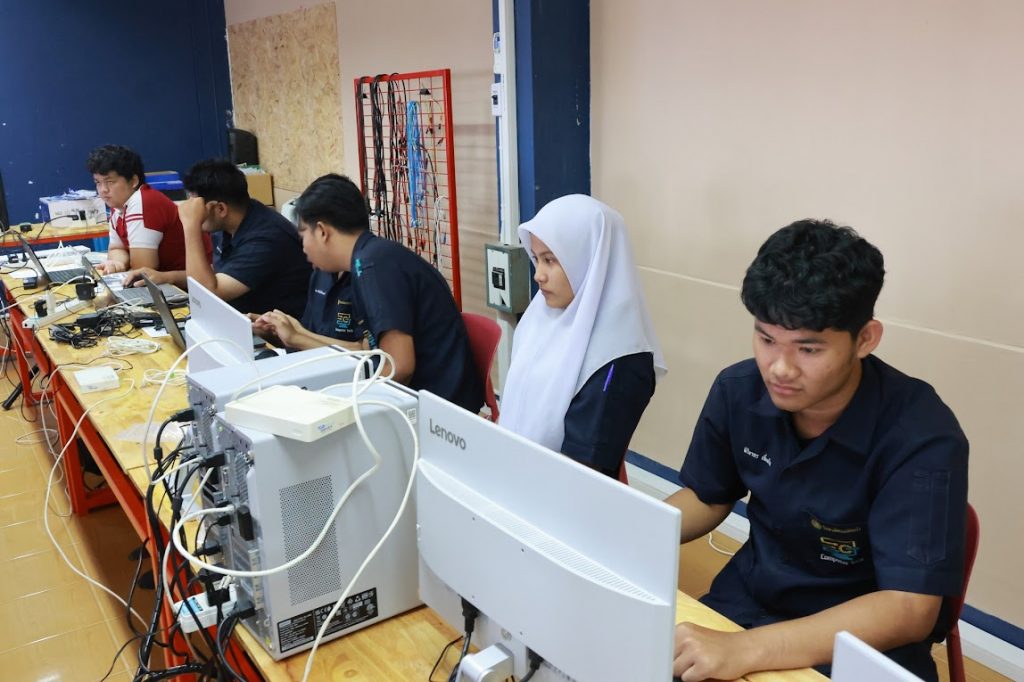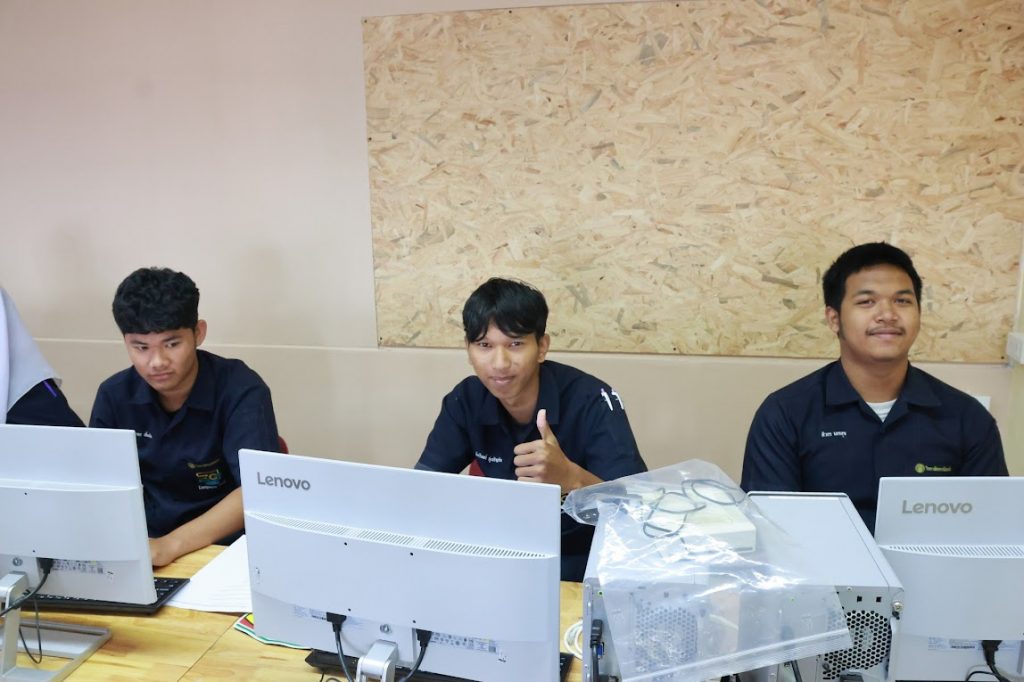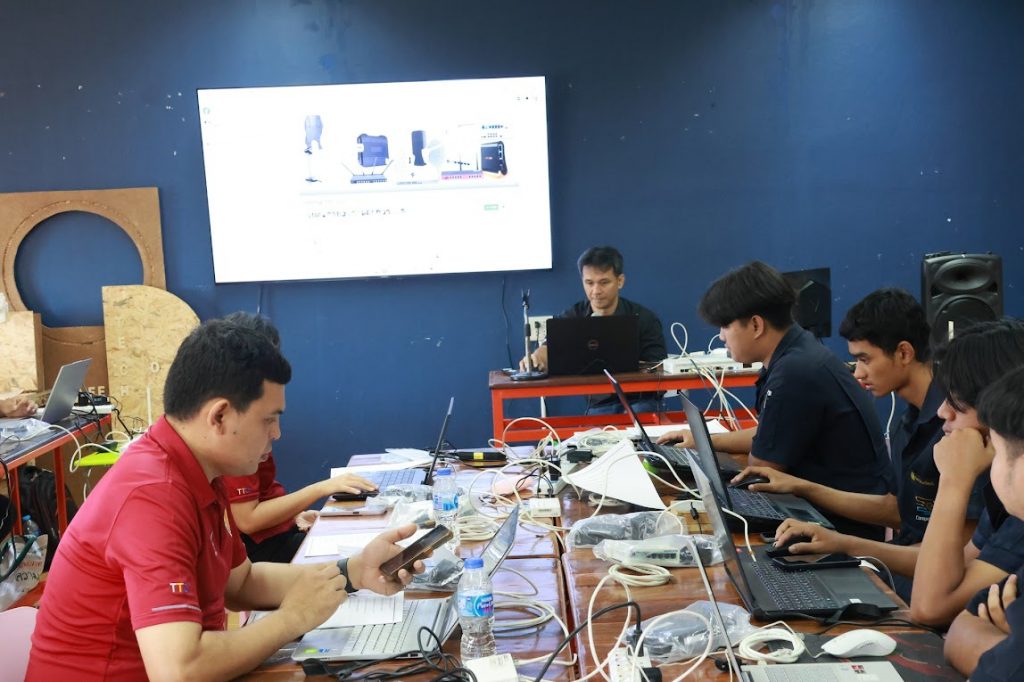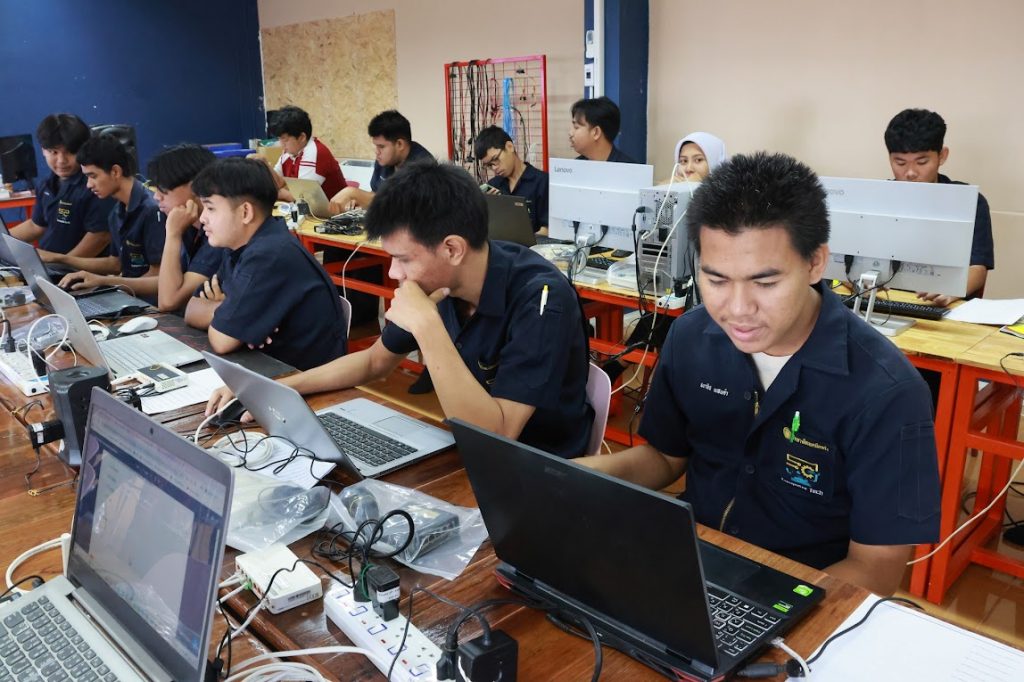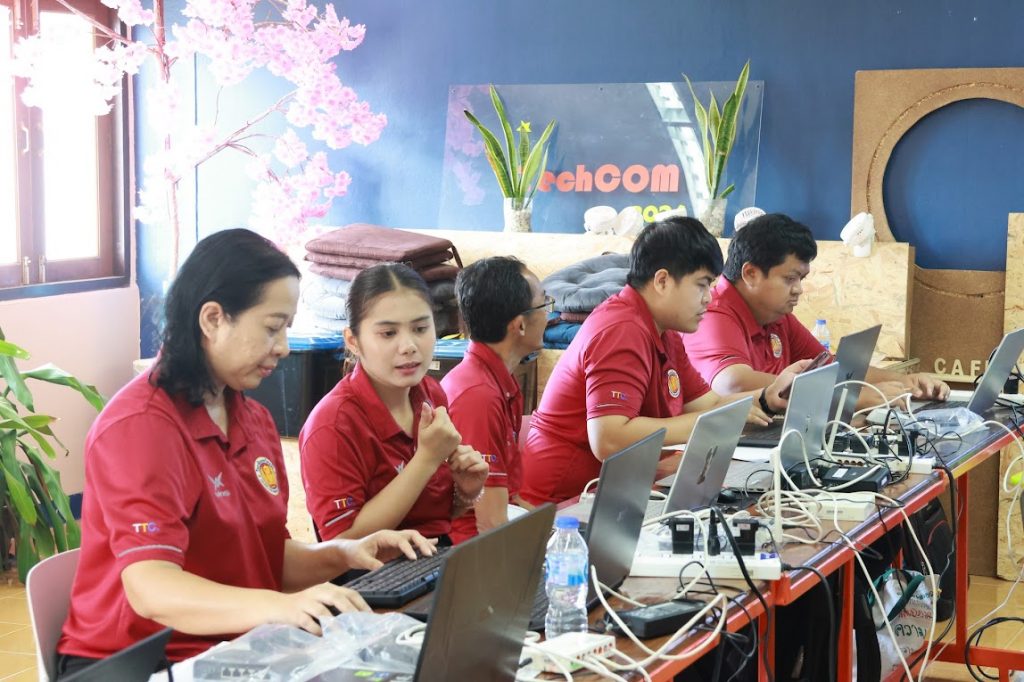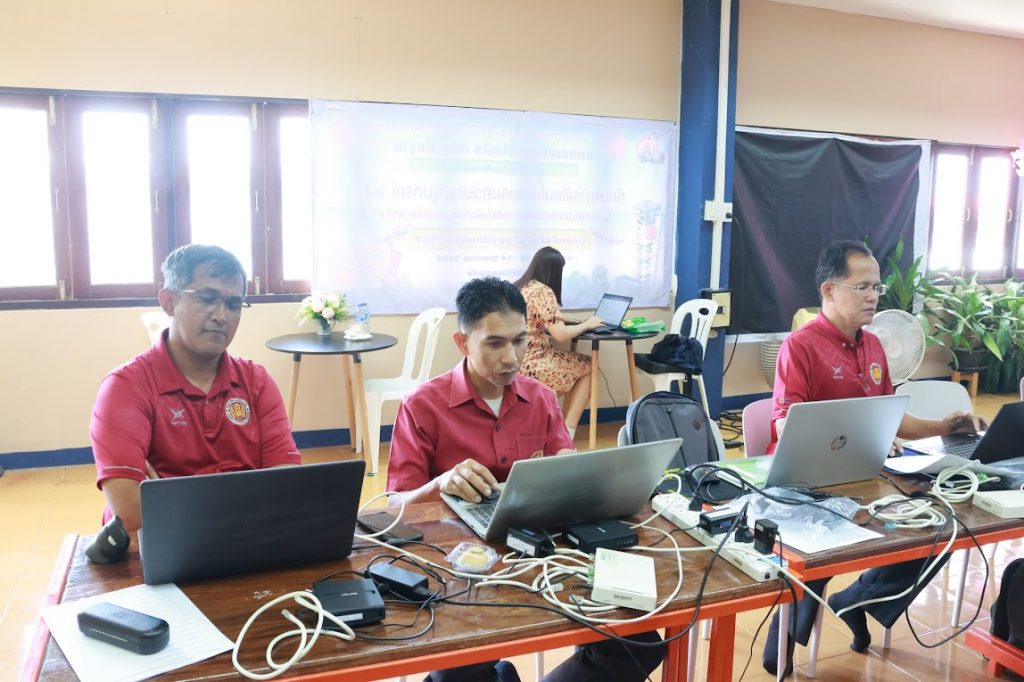
เป้าหมายโครงการ MikroTik Academy
MikroTik Academy โดยเป็นส่วนหนึ่งในการจัดการเรียนการสอน รายวิชา ระบบเครือข่ายคอมพิวเตอร์ (Computer Network System) สำหรับนักเรียน-นักศึกษา ที่เรียน หลักสูตร ปวช. เทคนิคคอมพิวเตอร์ และผู้สนใจ โดยเนื้อหา จะเป็นการจัดฝึกอบรมการใช้งานอุปกรณ์เครือข่ายของ MikroTik และสอบใบประกาศนียบัตร หลักสูตร MikroTik Certified Network Associate (MTCNA) อันเป็นการเพิ่มโอกาสให้ผู้เรียน ในการสมัครงาน การศึกษาต่อด้านระบบเครือข่ายคอมพิวเตอร์ และได้รับการยอมรับ ในระดับมาตรฐานสากล(World Class) มีระยะเวลาในการอบรม จำนวน 3 วัน
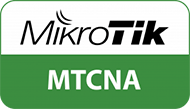
หลักสูตรอบรม MikroTik MTCNA หลักสูตรนี้เป็นหลักสูตรที่มุ่งเน้นการให้ความรู้และทักษะเบื้องต้น เพื่อให้มีความรู้ความเข้าใจในตัวอุปกรณ์ MikroTik ตั้งแต่ความรู้เบื้องต้น จนสามารถนำไปใช้งานได้ โดยการถ่ายทอดความรู้จากวิทยากรที่มีประสบการณ์ตรง และมีความประสบการใช้งานอุปกรณ์จริงช่วยให้นักศึกษาผู้เข้าอบรมสามารถแก้ปัญหา และมีความเข้าใจเกี่ยวกับกับเทคนิคการใช้อุปกรณ์ MikroTik สามารถนำความรู้ไปใช้ต่อไป
ความรู้ที่จะได้รับเมื่อจบหลักสูตร
1. สามารถใช้งานอุปกรณ์ RouterOS RouterBoard ได้เป็นอย่างดี
2. สามารถทดสอบการใช้งานและแก้ไขปัญหาเบื้อองต้นได้
3. สิทธิ์ในการสอบ MTCNA
4. เมื่อสอบผ่านตั้งแต่ 60% ขึ้นไปจะได้รับใบประกาศนียบัตร(Certificate)มาตรฐานสากล
MTCNA Outline Course
จุดเริ่มต้นของอุปกรณ์ Mikrotik ว่าอะไรคือ RouterOS และ อะไรคือ RouterBoard
การเข้าไปทำงานกับอุปกรณ์สามารถทำผ่านวิธีใดได้บ้าง
การใช้ Command Line ใน RouterOS
การคอนฟิกอุปกรณ์แบบเริ่มต้นเพื่อให้เชื่อมต่อสู่อินเทอร์เน็ตได้
การอัพเกรดและวิธีการอัพเกรด RouterOS แต่ละแบบ
Service ต่างๆใน Router OS
การจัดการ Login ในแต่ละ Level
การทำ Backup และ Restore อุปกรณ์มีกี่วิธี และ แต่ละวิธีต่างกันอย่างไร
การ Reset อุปกรณ์กลับไปยังสถานะเริ่มต้น และ สถานะต่างๆ
ทำความรู้จักกับ RouterOS License Level
การจัดการ DHCP Serviceการจัดการ Bridge Network
เรียนรู้เรื่องของการทำ Routing บนอุปกรณ์ Mikrotik และ ทฤษฏีของการทำ Routing
มาตรฐาน Wireless LAN ทั้งหมด และการใช้งาน Wireless LAN แบบพื้นฐานบนอุปกรณ์ Mikrotik
การจัดการ Firewall ขั้นพื้นฐานสำหรับอุปกรณ์ Mikrotik
การจัดการ Bandwidth แบบพื้นฐาน (QoS)
การทำ Point to Point Connection แบบพื้นฐานบนอุปกรณ์ Mikrotik
เครื่องมือต่างๆ สำหรับการ Troubleshooting บน Mikrotik
คุณสมบัติผู้เข้าอบรม
– มีความรู้ด้าน Network พื้นฐาน
– เข้าใจเรื่อง IP Address/ Subnet/ Gateway
– มีความสนใจใช้งานอุปกรณ์ MikroTik
– อุปกรณ์ MikroTik ที่มี Wireless & port LAN
– Computer หรือ Notebook ที่มีพอร์ต Lan
– อุปกรณ์สายแลน
– อุปกรณ์ Switch ใช้ทดสอบ
– Internet 2 วงจร
ระยะเวลาการอบรม
ระยะอบรม 3 วัน เวลาอบรม 09.00-17.00 น.
หลักสูตรอื่น ๆ ของ MikroTik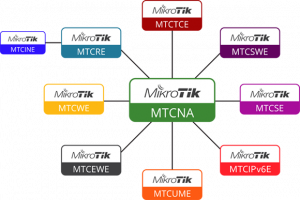
เมื่อสำเร็จการศึกษาในหลักสูตร MTCNA แล้วผู้เรียนยังสามารถต่อยอด และศึกษาเพิ่มเติมในหลักสูตรขั้นสูง หลาย หลักสูตรดังต่อไปนี้
MTCRE – MikroTik Certified Routing Engineer
MTCWE – MikroTik Certified Wireless Engineer
MTCTCE – MikroTik Certified Traffic Control Engineer
MTCUME – MikroTik Certified User Management Engineer
MTCINE – MikroTik Certified Inter-Networking Engineer
MTCIPv6E – MikroTik Certified IPv6 Engineer
MTCSE – MikroTik Certified Security Engineer
MTCSWE – MikroTik Certified Switching Engineer
MTCEWE – MikroTik Certified Enterprise Wireless Engineer
ประมวลภาพ โครงการยกระดับทักษะ (Up-Skill) ด้านระบบเครือข่ายคอมพิวเตอร์สู่มาตรฐาน MTCNA Certified” ระหว่างวันที่ 26-28 กุมภาพันธ์พ.ศ.2568 ณ แผนกวิชาช่างเทคนิคคอมพิวเตอร์
